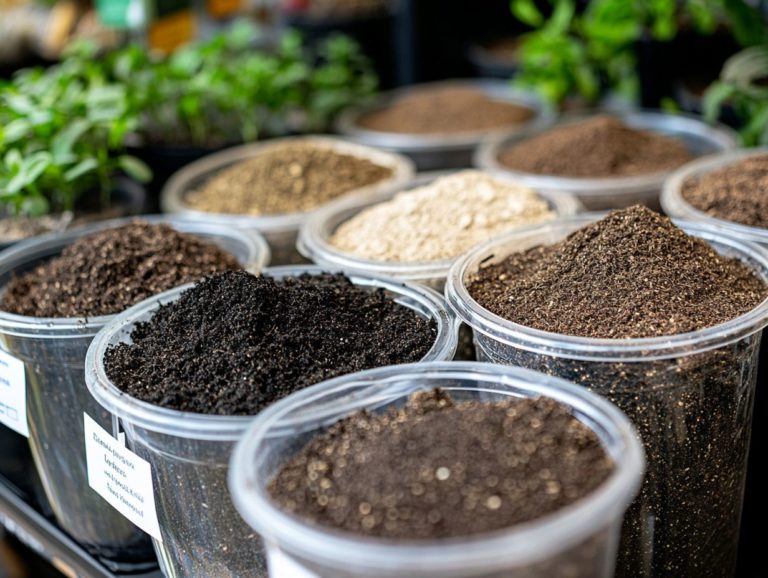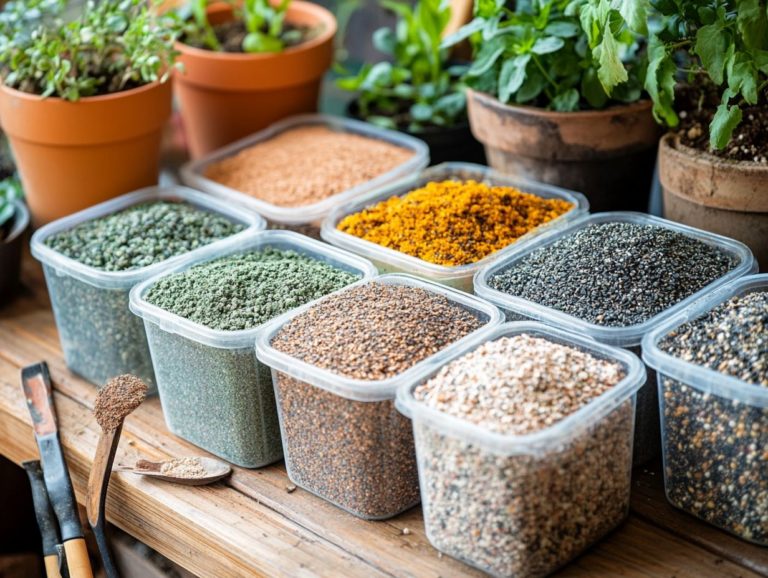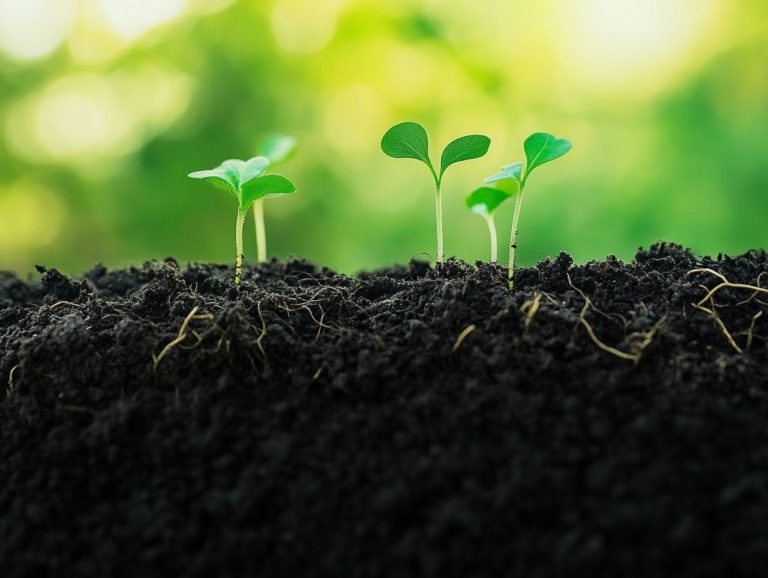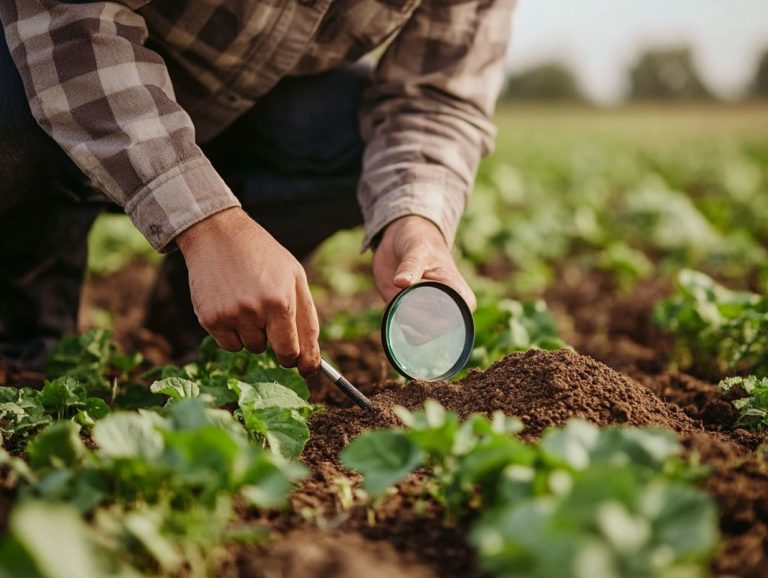How to Raise Soil Fertility for Indoor Plants
Soil fertility is vital for the health and vitality of your indoor plants, yet it often gets overlooked by many plant enthusiasts.
Understanding what makes soil fertile can profoundly influence your plants’ growth and overall well-being. This article delves into the essentials of soil fertility, covering its definition, the benefits it offers to your indoor greenery, and how to spot signs of poor soil health.
You’ll also find effective strategies for enhancing and maintaining soil fertility, ensuring your plants flourish for years to come. Let s explore how to create the perfect environment for your indoor plants!
Contents
- Key Takeaways:
- Understanding Soil Fertility
- The Importance of Soil Fertility for Indoor Plants
- Unlocking the Secrets to Soil Fertility
- Signs of Poor Soil Fertility
- Ways to Improve Soil Fertility
- Maintaining Soil Fertility for Long-Term Plant Health
- Frequently Asked Questions
- What is soil fertility and why is it important for indoor plants?
- How can I test the fertility of my indoor plant’s soil?
- What are some signs of low soil fertility in indoor plants?
- How can I improve the fertility of my indoor plant’s soil?
- Can I use fertilizer to raise soil fertility for indoor plants?
- Are there any natural ways to raise soil fertility for indoor plants?
Key Takeaways:
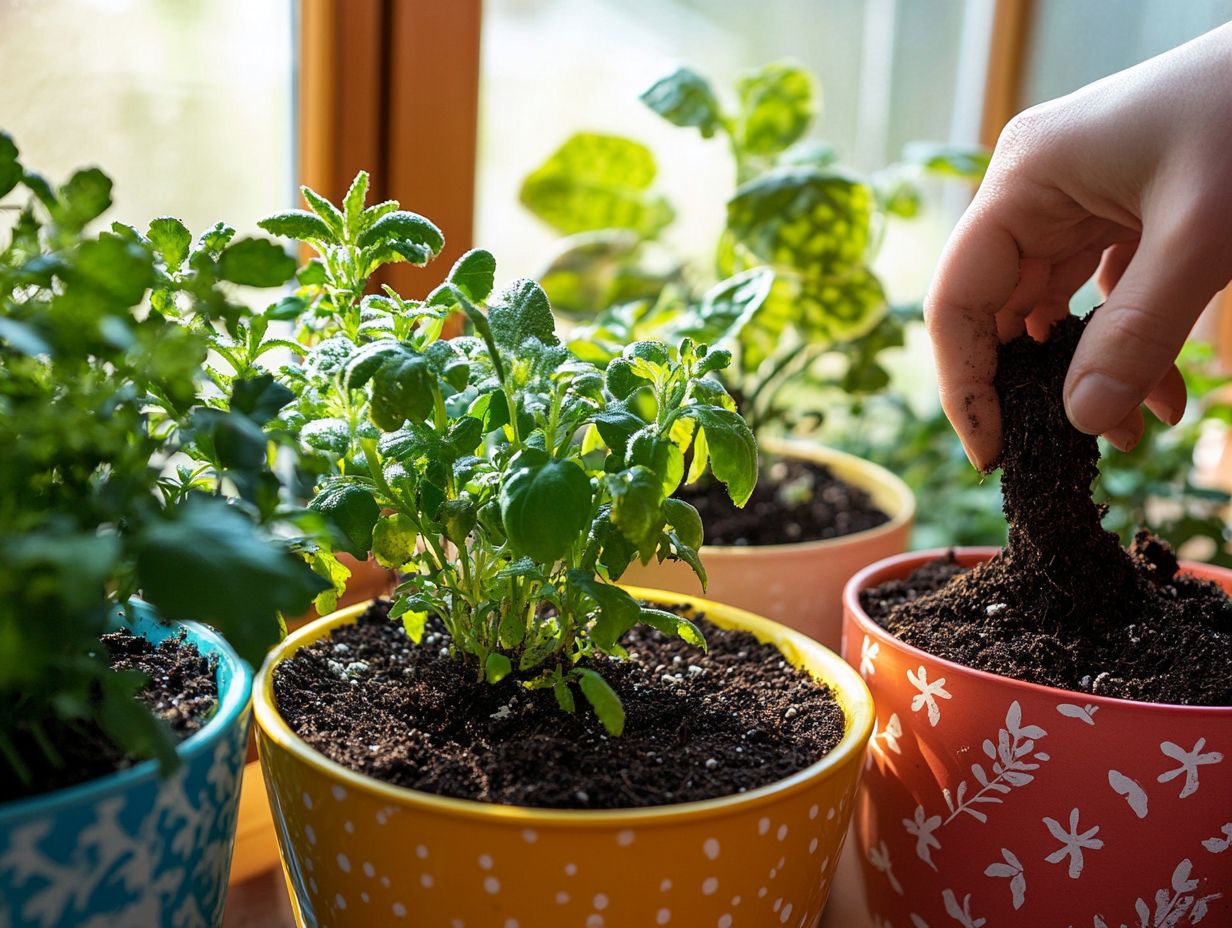
- Understanding soil fertility is crucial for indoor plants. Fertile soil provides essential nutrients, and plants thrive in it.
- Poor soil fertility can lead to stunted growth and yellowing leaves. Regular testing and addressing these issues are essential.
- Use natural, organic methods and fertilizers to boost soil fertility for indoor plants. Regular testing and best practices ensure long-term plant health.
Understanding Soil Fertility
Grasping the intricacies of soil fertility is essential for your gardening success and the well-being of the ecosystem. It s all about striking the right balance of nutrients within the network of life in the soil that nurtures plant growth.
A fertile soil environment not only boosts plant vitality but also fosters sustainable practices that benefit both the ecosystem and passionate gardeners like yourself. Incorporating organic materials such as compost and leaf mold, while recognizing the vital role of microorganisms, can significantly enhance soil health and fertility.
This, in turn, ensures that your plants flourish, ultimately contributing to a vibrant biodiversity.
What is Soil Fertility?
Soil fertility is the cornerstone of plant growth and development, encompassing the soil’s ability to provide essential nutrients. This includes major nutrients like nitrogen, phosphorus, and potassium, which plants need in larger amounts, as well as micronutrients that are vital for overall plant health.
However, it’s not just about the nutrients themselves; the soil structure plays a critical role, influencing how well these nutrients are retained and accessed by plant roots. Healthy soil, rich in organic matter, strikes a harmonious balance of air and water, creating an ideal habitat for microorganisms. These beneficial microbes are pivotal in nutrient cycling, breaking down organic matter and enhancing nutrient availability for plants.
To maintain soil fertility, it s essential to grasp these intricate relationships and manage them thoughtfully. Consider implementing practices such as:
- Crop rotation
- Adding compost
- Minimizing soil disturbance
By doing so, you foster a thriving environment for your plants and ensure their continued growth and vitality.
The Importance of Soil Fertility for Indoor Plants
Soil fertility is absolutely crucial for your indoor plants, as it directly impacts their growth and vitality, creating a thriving ecosystem within your pots and containers. This rich environment not only enhances your overall plant care routine but also encourages lush foliage and vibrant blooms.
By ensuring the soil is nutrient-rich, you set the stage for your plants to flourish. Adequate soil fertility supports strong root development and facilitates effective nutrient uptake, ultimately contributing to pest resistance and robust plant health.
Start enhancing your soil today and watch your indoor garden thrive!
Unlocking the Secrets to Soil Fertility
Benefits for Plant Growth and Health
Soil fertility is crucial for elevating plant growth and health. It ensures optimal nutrient uptake, essential for the vibrant development of your plants.
This is especially true when using organic fertilizers that nurture a rich soil ecosystem. Healthier foliage, robust root systems, and resilience against pests and diseases are just a few benefits of enhanced nutrient uptake.
Incorporating organic fertilizers, such as compost and manure, effectively improves soil structure. These practices also enhance water retention and stimulate beneficial microbial activity.
For instance, compost enriches the soil with important nutrients. It fosters a diverse community of earthworms that aerate the soil and create channels for deeper root penetration.
These practices ensure your plants thrive and support sustainable farming. They promote biodiversity and foster a balanced ecosystem, benefiting both the environment and crop productivity.
Signs of Poor Soil Fertility
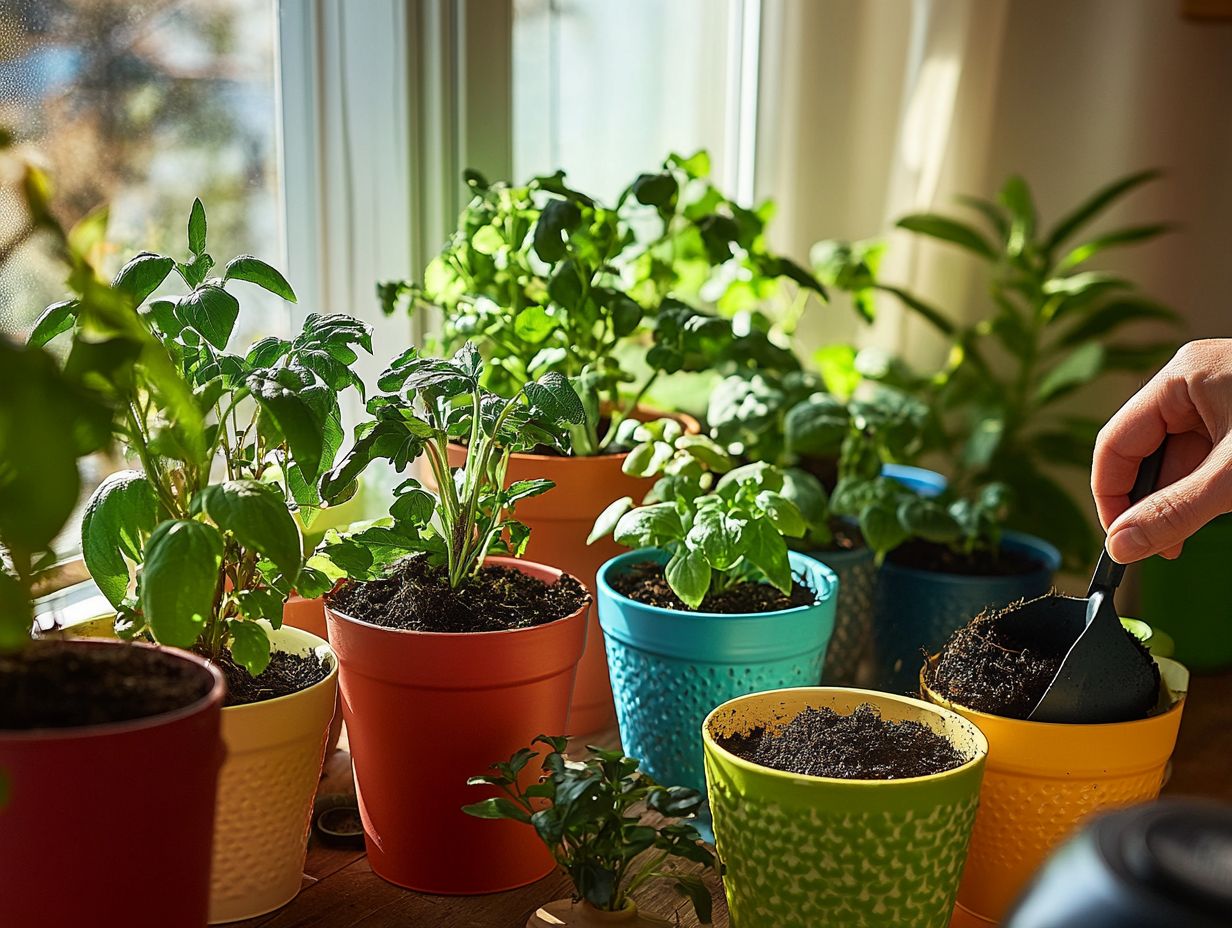
Recognizing the signs of poor soil fertility is essential for nurturing vibrant plants. Various symptoms reveal nutrient deficiencies or imbalances that influence the overall health and growth of your plants.
Staying attuned to these indicators allows you to take proactive measures. This ensures your garden thrives beautifully.
Identifying and Addressing Issues
To effectively address soil fertility issues, you must first identify specific nutrient deficiencies in your plants. Signs like discoloration or stunted growth can help you implement the right soil amendments.
Recognizing these signs early is vital. If neglected, your plants may face serious health issues and reduced yield.
Common deficiencies, such as nitrogen, phosphorus, and potassium, can typically be pinpointed by observing leaf color and overall vigor. Yellowing leaves may signal a nitrogen deficiency, while stunted root growth might indicate inadequate phosphorus.
Once you’ve identified these issues, amending the soil with targeted fertilizers or organic matter can effectively rectify the deficiencies. Additionally, understanding soil pH for indoor plants and adjusting your watering practices can enhance nutrient availability, creating an optimal environment for your plants.
Ways to Improve Soil Fertility
Improving soil fertility is within your reach through a range of natural and organic methods. These approaches enrich the soil with essential nutrients and boost its ability to support vibrant plant growth.
Embracing these techniques enhances your garden and contributes positively to the environment.
Natural and Organic Methods
Natural and organic methods for enhancing soil fertility invite you to explore compost, leaf mold, and other enriching organic materials. These practices nourish the soil and elevate its microbiome, leading to remarkable improvements in soil health and fertility.
By adopting these techniques, you provide essential nutrients while enhancing the soil’s structure. This results in superior water retention and aeration crucial factors for plant vitality.
For example, composting kitchen scraps and garden waste transforms them into nutrient-rich humus. This natural fertilizer works wonders for your plants.
Leaf mold decomposed leaves serves as excellent organic matter that boosts moisture retention and fosters beneficial microorganisms. Embracing crop rotation and cover cropping further enriches soil vitality, preventing nutrient depletion and naturally suppressing weeds.
By integrating these methods into your gardening practices, you cultivate a thriving ecosystem. This nurtures healthy plant growth while minimizing reliance on synthetic fertilizers.
Using Fertilizers
The use of fertilizers, whether organic or chemical, is crucial for enhancing soil fertility. They supply essential nutrients and help achieve balanced nutrient levels that support robust plant health.
Organic fertilizers, sourced from natural materials like compost, manure, and bone meal, enrich your soil with slow-releasing nutrients. They also improve soil structure, promoting beneficial tiny organisms that help plants grow. This fosters a thriving ecosystem beneath the surface.
Chemical fertilizers provide a quick boost of nutrients such as nitrogen, phosphorus, and potassium. When applied correctly, they lead to rapid plant growth.
Understanding the significance of balanced fertilizers is essential. They ensure your plants receive the right proportions of these vital elements, preventing deficiencies or toxicities that could hinder growth.
By employing a blend of both types, you can effectively enhance soil fertility and boost yield. This caters to the diverse needs of your plants throughout the growing season.
Maintaining Soil Fertility for Long-Term Plant Health

Maintaining soil fertility is crucial for ensuring the long-term health of your plants. Regular soil testing and necessary adjustments create an environment that fosters optimal growth.
Regular Testing and Adjustments
Regularly testing your soil is essential for gauging the nutrients in the soil. This ensures that fertility is upheld, fostering healthy plant growth.
The process begins with collecting soil samples from various spots in your garden or field. Send these samples to a laboratory for analysis. Once you receive the results, you gain vital insights into pH levels, organic matter content, and concentrations of key nutrients like nitrogen, phosphorus, and potassium.
By accurately interpreting these results, you can identify specific deficiencies or surpluses. Adjustments based on this information like tweaking fertilizer applications or boosting soil organic matter greatly enhance sustainable soil health.
Regular soil testing helps maximize crop yields and contributes to long-term environmental stewardship.
Top Tips to Elevate Your Indoor Gardening Game!
Implementing best practices for indoor gardening can significantly enhance soil fertility. Ensure that your plants receive the essential nutrients and care they need for thriving growth, even in limited spaces.
Take charge of your indoor garden! Understand the unique needs of each plant and diligently monitor the conditions within your garden environment. Regular maintenance is key. Adjust your watering techniques to prevent excess water while maintaining adequate moisture, which is crucial for promoting healthy root development.
Routine plant care, including proper pruning and effective pest management, reduces stress on your plants. This allows them to flourish. By incorporating optimal soil amendments like compost or organic fertilizers, you can improve nutrient availability.
Pay attention to these details, and you can cultivate a vibrant indoor garden that not only beautifies your space but also enhances your personal well-being.
Frequently Asked Questions
What is soil fertility and why is it important for indoor plants?
Soil fertility refers to the availability of essential nutrients and microorganisms in the soil necessary for plant growth and health. It is crucial for indoor plants because they rely solely on the nutrients present in the soil for their growth and development.
How can I test the fertility of my indoor plant’s soil?
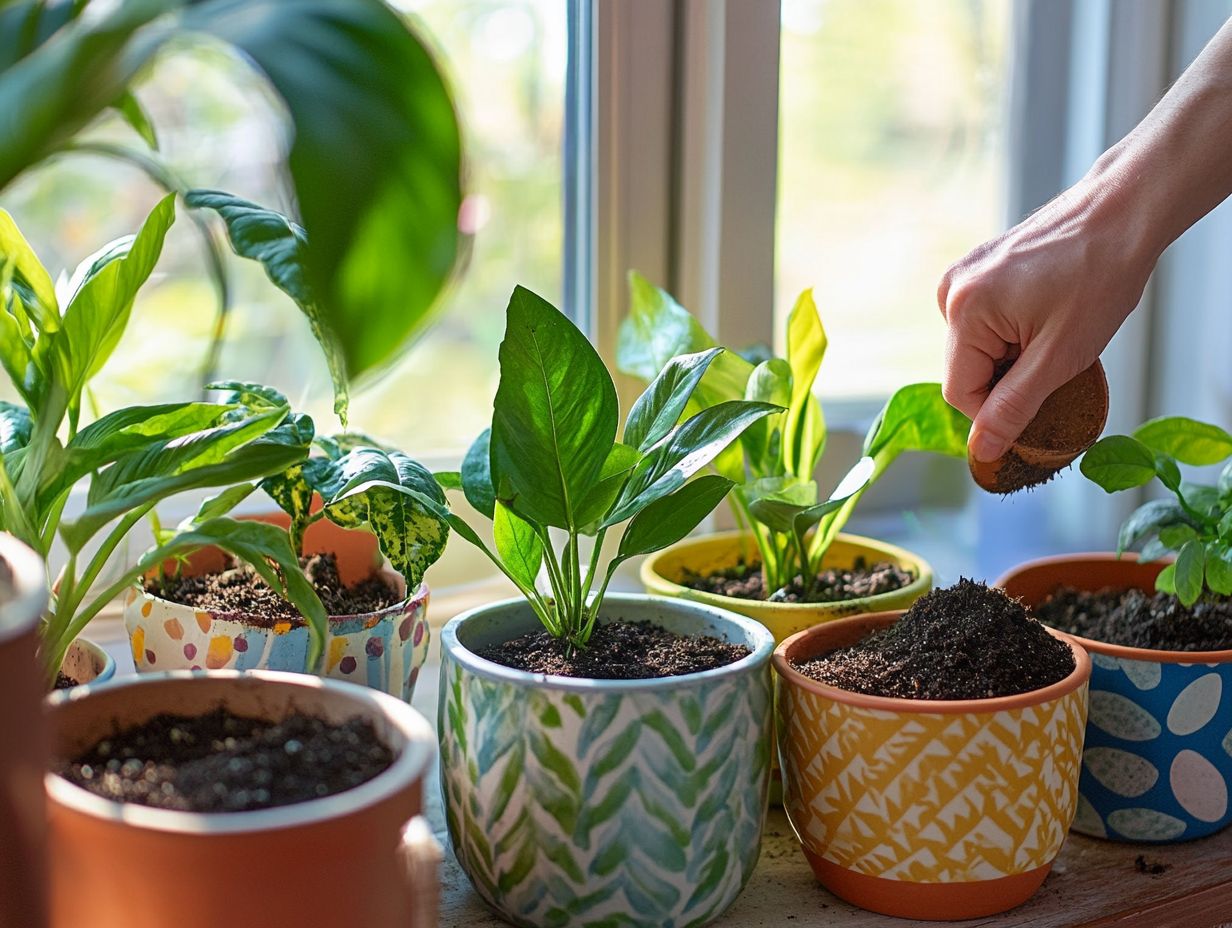
One way to test soil fertility is by conducting a soil test. This can be done at home using a soil test kit or by sending a sample to a professional lab. Soil tests measure the levels of essential nutrients and pH levels in the soil, giving you an idea of its fertility.
What are some signs of low soil fertility in indoor plants?
Signs of low soil fertility include slow growth and yellowing or wilting leaves. A lack of flowers or fruits can also indicate a lack of important nutrients.
How can I improve the fertility of my indoor plant’s soil?
Add organic matter like compost or aged manure to your soil. This will provide essential nutrients and improve the soil s structure for better water and nutrient retention.
Can I use fertilizer to raise soil fertility for indoor plants?
Yes, a balanced fertilizer can help increase soil fertility. Look for one with equal amounts of nitrogen, phosphorus, and potassium, like a 10-10-10 ratio. Follow the instructions on the package for the right amount and frequency.
Are there any natural ways to raise soil fertility for indoor plants?
You can raise soil fertility using natural methods. Try making your own compost, using compost tea, or adding mulch. These methods will enhance soil fertility and support beneficial microorganisms. Try these natural methods today, and watch your plants flourish!
Don’t wait! Start enhancing your indoor plant soil now for vibrant, healthy growth!

